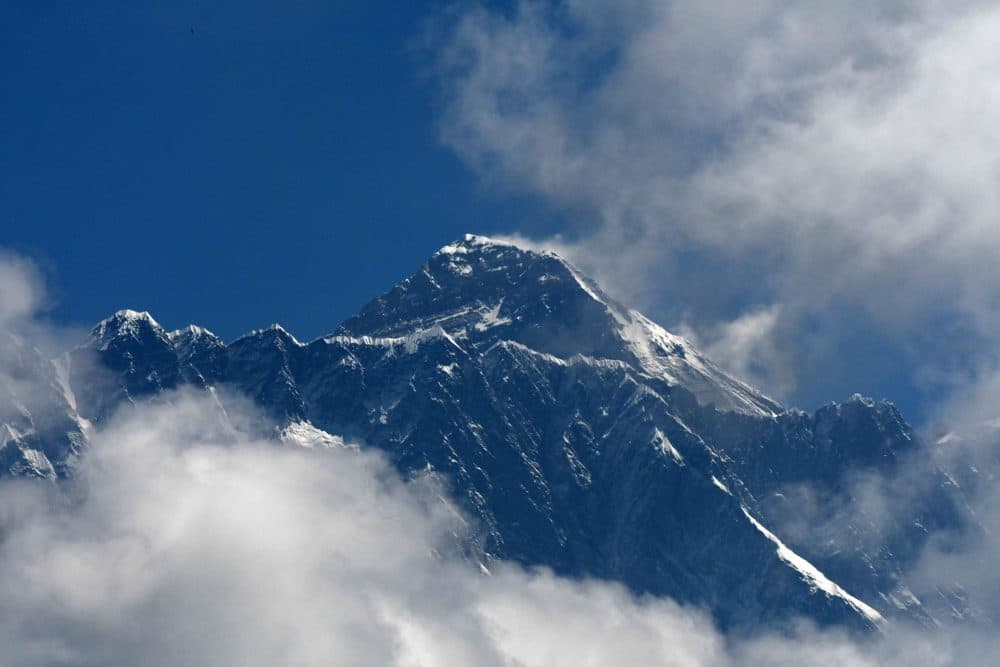Advertisement
Deadly Everest Overcrowding Prompts Question: Who Should Be Allowed To Climb It?
Resume
The 2019 climbing season on Mount Everest has been one of the deadliest on record.
At least 11 people have died trying to make the ascent, and images of a traffic jam of climbers at the top of the mountain have put pressure on the Nepalese government to limit the number of permits it issues.
National Geographic journalist Freddie Wilkinson, who has been reporting from Everest's base camp, tells Here & Now's Peter O'Dowd the Everest summit season is winding down.
"It was an eventful year," Wilkinson says, "and there was a little more unsettled weather, which resulted in less days to summit and forced a lot of people to go for the top on the same few days."
Some people are well-prepared to make the ascent, while others — who are often accompanied by guides offering a cheaper rate — aren't ready, Wilkinson says. Mountains can also become more dangerous the more crowded they are, he adds.
"I also spoke to several veteran guides, who were a little agitated about this narrative that has come from the photo of the line," Wilkinson says. "And they were quite adamant that the line isn't killing people per se — it's more of a cascade of events, bad decision-making and a lack of leadership that is really behind some of the tragedies you've been hearing about."
Interview Highlights
On what can go wrong when climbing Everest
"Well, when you're going through the top of a mountain, you have to always remember that things aren't going to go according to plan and be flexible, be willing to adjust your plans when something bad happens. On Everest, people do tend to get tunnel vision and keep going to the top when maybe if there was a more experienced climber, who could step in and say, 'Jeez, you're not moving too fast, and you've already used half your oxygen. You really need to turn around.' You know, those sorts of ... common sense decision-making that sounds very straightforward at sea level, but when you're at 27 or 28,000 feet, it's hard to keep your eye on the big picture.
"For every Everest climber, summit day is the culmination of a journey that is probably years in the making, and certainly, requires weeks and weeks of time away from home. So everyone wants to get their best crack at the top."
On criticism that the Nepalese government is allowing too many permits
"People need to understand that the guiding on Mount Everest happens in a very unregulated, free-market dynamic. And so there's a huge variety and diversity in the levels of professionalism that different commercial expeditions provide. You do see that many of the Nepal-based trekking companies are charging less and attracting more of a budget client. Fees for a Western-guided Mount Everest ascent cost around $70,000 and up, whereas you can book with a Nepali trekking agent for about half that — maybe [$30,000] or $35,000."
Peter O'Dowd produced and edited this interview for broadcast with Kathleen McKenna. Samantha Raphelson adapted it for the web.
This segment aired on May 29, 2019.
